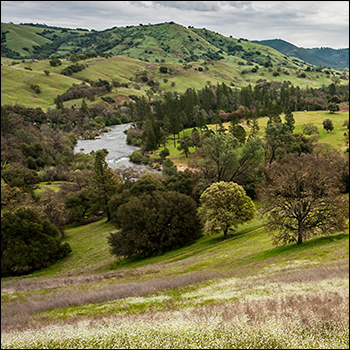
Thinking Hard About Conservation
Do conservation easements make private lands susceptible to government interference in light of 30x30 initiative?
As they relate to natural resource management, the two terms’ definitions have often been contorted, confused or combined. It has happened so much that some people don’t understand the difference. They think preservation and conservation are the same thing.
However, preservation of a resource means guarding it against harmful effects of human activity — usually by restricting or halting certain resource uses, or all of them. That’s not the same as conservation achieved through planned, sustainable use of resources.
Margaret Byfield thinks the Biden administration’s agenda will further the more extreme environmentalist goals for preservation at the expense of individual property rights. Byfield is executive director for American Stewards of Liberty, which attempts to educate landowners about property-rights issues and advocates for local government policy that prevents federal overreach.
Although, some cow-country folk disagree with Byfield’s claim that conservation easements make private lands susceptible to government interference.
Taking issue with 30x30
Recently, Byfield has raised concern over a Biden executive order, issued Jan. 27, purported to address climate change. The order includes language directing the Secretary of the Interior, in consultation with the Secretary of Agriculture and heads of other agencies, to submit recommendations for conserving at least 30% of U.S. lands and waters by year 2030.
The order’s language specifically uses the word “conserving” when stating the “30x30” goal, and calls for the involvement of state, local and tribal governments, as well as landowners. However, Byfield is warning local stakeholders to guard against restrictive future federal action.
Though still unfamiliar to many, the 30x30 plan is not new. A Department of the Interior fact sheet, also released Jan. 27, offers brief explanation using language from an August 2019 report published by the Center for American Progress (CAP). That report served as a framework for a 2020 Senate resolution promoting 30x30, which was co-sponsored by then-senator and now Vice President Kamala Harris. A companion measure was introduced in the House of Representatives by Deb Haaland, who was recently confirmed as the new U.S. Secretary of the Interior.
“All of it comes from a playbook written by CAP,” says Byfield, describing the organization as a think tank backed by progressive liberals. “They believe individuals shouldn’t be trusted with land management and the administrative state can do it better.”
Byfield is skeptical of CAP boasts that a majority of Americans favor 30x30. The report’s claims of support by 86% of all American voters were extrapolated from a survey of about 1,200 people. That’s a weak sample in Byfield’s estimation. She says there is insufficient science behind claims that 30x30 will contribute to a climate change turnaround.
Warning signs
Byfield points to another recent Biden administration move whereby the Department of Interior revoked state and county veto power over federal land acquisitions through the Land and Water Conservation Fund. She warns that increased federal land acquisition, expansion of acreage under wilderness and national monument designations, and increased restriction of multiple-use activities (livestock grazing, timber harvesting and energy production) on public lands are likely methods for putting more land under protection. However, achieving the 30x30 goal will also require placing significantly more privately owned land under permanent protection.
“If you read the CAP report, you learn that what they really want is 50% by 2050,” states Byfield. “That will require permanent protection of even more private lands.”
Options
Expecting proponents to aggressively push a 30x30 agenda, Byfield urges landowners to remain vigilant.
“Educate yourselves and your local and state representatives, and adopt policy to guard against expanded federal control of property rights,” she advises.
Byfield says the best defense against federal overreach is through a process of policy coordination. To be most effective, it requires action by multiple local policy-making bodies, including municipal and county boards, water districts, zoning boards, and even school districts and fire departments.
“ ‘Coordination’ is a process mandated by federal law that requires federal agencies to coordinate their plans, programs and management activities with local governments,” explains Byfield. “It’s a powerful tool that can be used to protect private property rights, productive uses of land and local economies from burdensome government regulations.”
According to Byfield, American Stewards of Liberty can supply instructional information titled “Policy Coordination for Local Governments.” The guide is written for local elected officials, staff and community members having an interest in supporting local objectives.
Conservation easements
Byfield says landowners should expect 30x30 proponents to advocate for increased use of conservation easements as a means of incentivizing landowners to place much more privately owned land under protection. Environmental groups supportive of 30x30 have said as much. Yet Byfield openly opposes conservation easements established in perpetuity. She has suggested that property rights surrendered under an easement could end up in unfriendly hands, and even in the hands of an unfriendly government agency.
“What if you sell an easement to a land trust and that land trust sells it to someone else? What if the easement is sold to the federal government?” asks Byfield, asserting that the landowner might no longer have the right to build a fence when and where he or she wants without asking a federal land manager.
“Under a conservation easement, you forfeit your control for perpetuity,” she emphasizes.
The other side
Some landowners take issue with Byfield and her broad condemnation of conservation easements. They argue that conservation easements are a great tool for accomplishing a landowner’s personal conservation goals, particularly on rangelands.
David Sands, executive director of the Nebraska Land Trust, says it’s a mistake to talk about conservation easements in generalized terms. He says every conservation easement is a unique contract designed for a specific purpose — or it ought to be.
“I would never say that all conservation easements are good, and I couldn’t say all have turned out well for landowners,” says Sands, adding that it’s also wrong to say all conservation easements are bad.
“The terms can range from very restrictive to very flexible. An easement designed to protect certain endangered species might be bad for a rancher. On the other hand, an easement designed to protect working lands may be very good for a rancher,” adds Sands. “Establishing an easement is not something you do without a lot of thought, and you have to know and trust the particular land trust you’re dealing with.”
The desire to maintain their property as working lands motivated the Price family to establish a conservation easement on their Gracie Creek Ranch located northwest of Burwell, Neb. Rather than a forfeiture, they saw it as a way of maintaining control of how their land would be used in the future.
Bob Price explains that they wanted to protect the ranch from potential intrusion by oil pipeline systems, electric power transmission lines and subdivision. Under the easement, development rights were sold to the Sandhills Task Force, a rancher-driven nonprofit organization. The terms require that the land remain in agricultural production as grassland.
“We were involved in writing terms, which allow us to manage our ranching operation like we wanted to, without restricting any practical management practices,” states Price. “We did it to protect our business and way of life. It gave us peace of mind and, at the same time, preserved open space and protected wildlife habitat.”
Erik Glenn is executive director for the Colorado Cattlemen’s Agricultural Land Trust (CCALT) and president of the Partnership of Rangeland Trusts (PORT), a consortium of land trusts formed by state cattlemen’s associations and other agricultural industry groups. Glenn says all member land trusts expect landowners to be involved in writing every easement contract.
“The entire document is negotiable,” explains Glenn, emphasizing that the landowner and the land trust must agree on which rights of usage and development are to be conveyed to the land trust. Those rights are then extinguished and can’t be resurrected. The document also details the rights the landowner retains, which may include allowances for future development associated with operation of a viable agricultural business. The landowner still controls access to the property.
“Every easement document does have a clause related to transfer. It can’t be sold, but it can be transferred,” adds Glenn, explaining that transfer might be necessary if the land trust that originally held the easement someday ceased to exist. “CCALT easements require landowner consent for transfer, if that should ever happen. Landowners can specify who the succeeding easement holder would be, naming another nongovernmental, agricultural land trust.”
Glenn believes more strong agricultural land trusts are needed, to help agricultural landowners conserve working lands. Yet participation must remain voluntary. He also advises landowners to be watchful of developments pursuant to 30x30, recommending they work through their respective cattlemen’s associations to advocate for private property rights.
Glen also recommends landowners engage directly with state legislators and congressional delegations, insisting that conservation measures applied to privately owned lands be implemented voluntarily and without government coercion.
Editor’s note: Troy Smith is a freelance writer and cattleman from Sargent, Neb.



